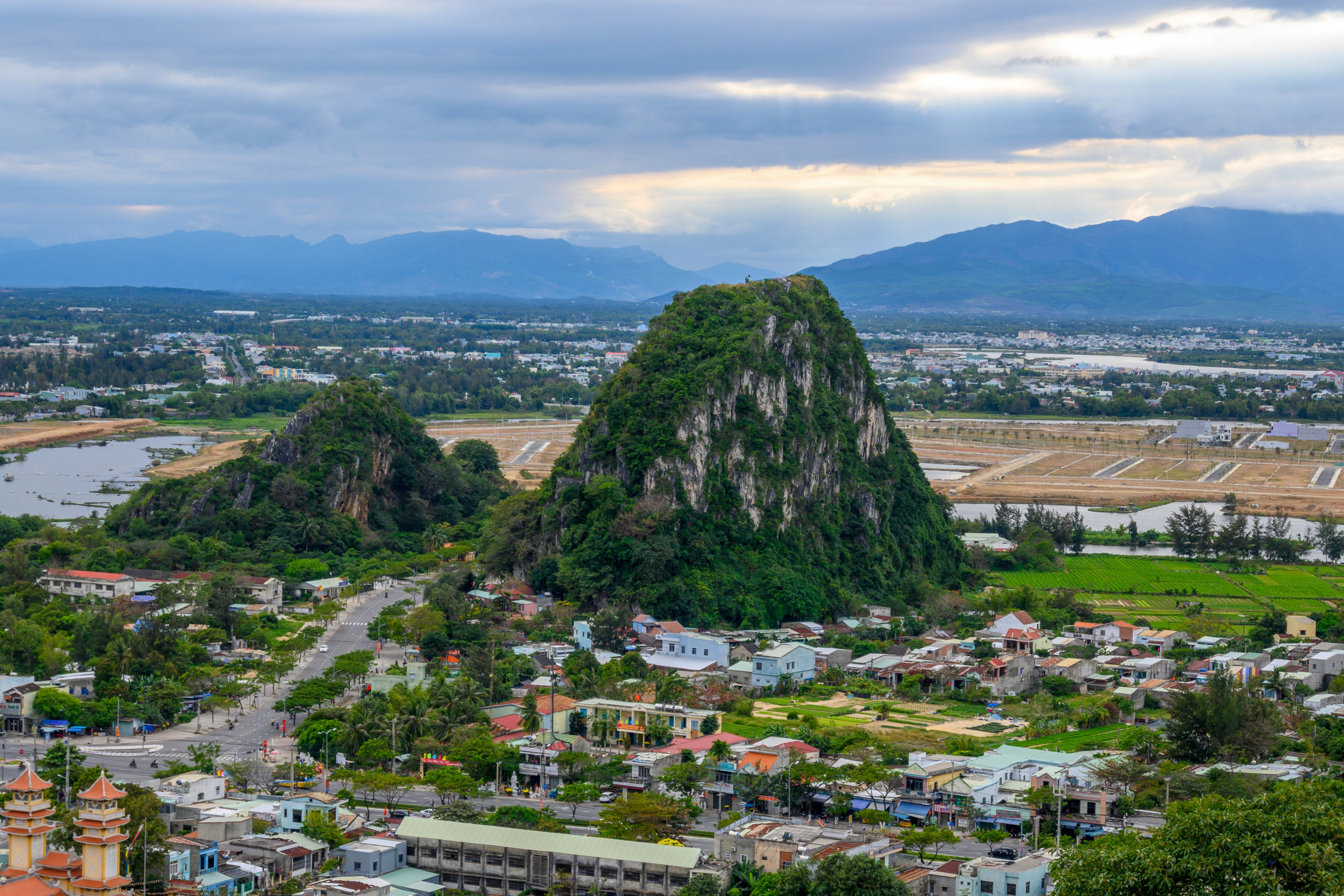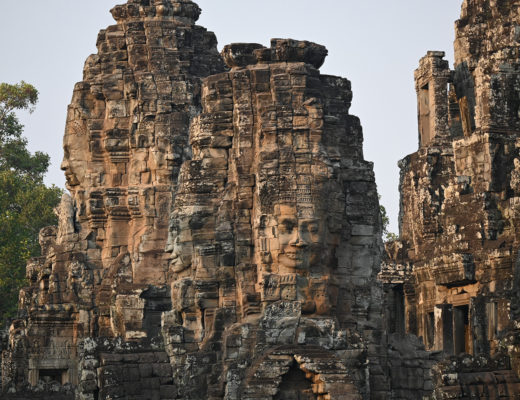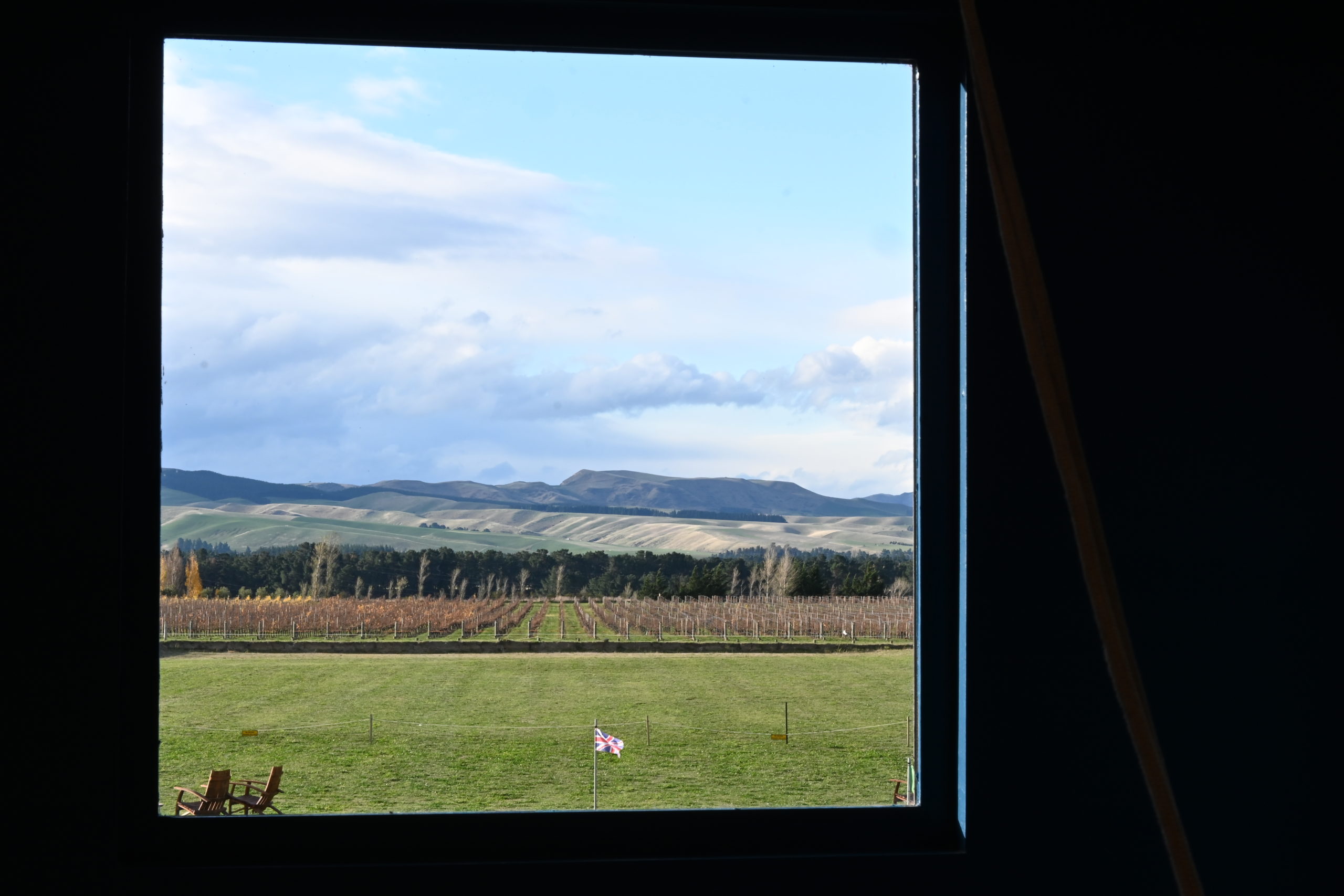Disclaimer: My apologies readers, this post has been in draft form for over one year; I thought it was time to finally polish it up and post! (I visited Vietnam in January of 2020).
Next Stop, Vietnam!
In January of 2020, after celebrating the holidays back in the States with my family, I booked a flight and three days later landed in Vietnam. For the first time in my life I was traveling to a far away country and, not only did I not have a return ticket, but I had no idea when I would return and which countries I would visit. Nothing was off-the-table and the endless list of potential travel destinations was intoxicating. (At the time, Covid-19 was not part of my vocabulary, and, to me, the occurrence of a global pandemic seemed as likely as an alien invasion).
Why Vietnam?
Everyone I had met during my prior travels had raved about Vietnam. I had only scratched the surface of Southeast Asia, with my adventures in Thailand and Laos the previous month, so it made sense to dive deeper into the unknown. Besides, I wanted to learn more about Vietnam, a country that has played such a prominent role in American history during the later half of the 20th century.

An Overview of My Vietnam Travels
I spent nearly three weeks bouncing around Vietnam without any itinerary or plans. My meandering led me to the following Vietnamese cities: Hanoi —> Sapa —> Dong Hoi —> Phong Nha —> Hoi An —> Da Nang.
Hanoi Motorbike Culture
First off, I stopped in Vietnam’s capital city of Hanoi. Population, 6 million. Motorbike count, 7 million. I stepped off the airport bus, whipped out google maps and started to head in the direction of my hostel. But, wait, where are the sidewalks? It quickly became apparent, cities in Vietnam aren’t meant for two-legged passengers but rather two-wheeled commuters.
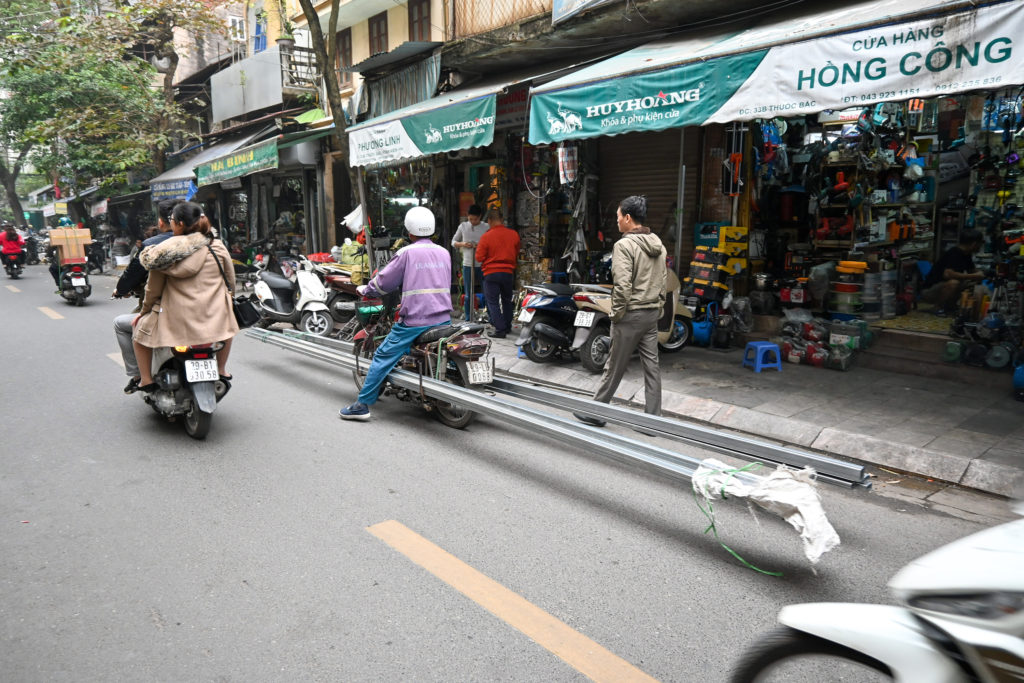
My Understanding of the Hanoi Traffic Code
- Sidewalks are not for people, they are for parking motorbikes
- Crosswalks are not functional, they are street decoration
- A two lane road can fit approximately 9 motorbikes side-by-side, but if you stagger the bikes, you can always fit more
- A red light doesn’t mean stop, it means be a bit more careful weaving through oncoming motorbike traffic
- Motorbikes can carry anything, use your imagination. A family of five, four-meter (13 feet) steel bars, 50 dead chickens, kumquat trees… the possibilities are endless
Hanoi Highlights
I spent four days in Hanoi learning how to fit in: practicing how to cross a street without being run over by motorbikes; enjoying unfamiliar cuisine while seated in miniature child-size plastic chairs; and adjusting my lungs to the poor air quality. Sometimes, as was the case when I visited Vietnam, when I explore a new city I am truly in the mood to learn all I can about the city’s people, culture, and history. I didn’t hold back when exploring Hanoi and tried to absorb as much of the “real Vietnam” as possible.

Below are the places I visited in Hanoi and a few takeaways from each:
- Hanoi’s Old Quarter: An area of the city that is touristy, but a must-see in Hanoi. While visiting Hanoi’s Old Quarter, I: learned of the Vietnamese obsession with sweet foods (e.g. Chè = sweetest beverage on earth); took note of the French influence in Vietnam with the multitude of coffee shops (France colonized Vietnam from the 1880’s – 1940’s); came face-to-face with a roasted corgi on a metal spit that still haunts my dreams; and was introduced to a Vietnamese specialty, “egg coffee“.
- Hoan Kiem Lake and Ngoc Son Temple: The centerpiece landmark in Hanoi, impossible to miss. I ran around the lake and jump-roped nearby daily. Similar to Laos, I don’t think going on a jog is a normal activity in Vietnam and I attracted some confused stares. While on my jogs, I was introduced to two unfamiliar activities: 1) Vietnamese, typically of an older age, standing as still as stone and in a meditative trance for long periods of time, and 2) da cau, a Vietnamese sport where players kick a small birdie, much resembling a badminton bird, back and forth. I was mesmerized by the skill and flexibility involved, especially when I discovered players competing in doubles play on miniature badminton courts.
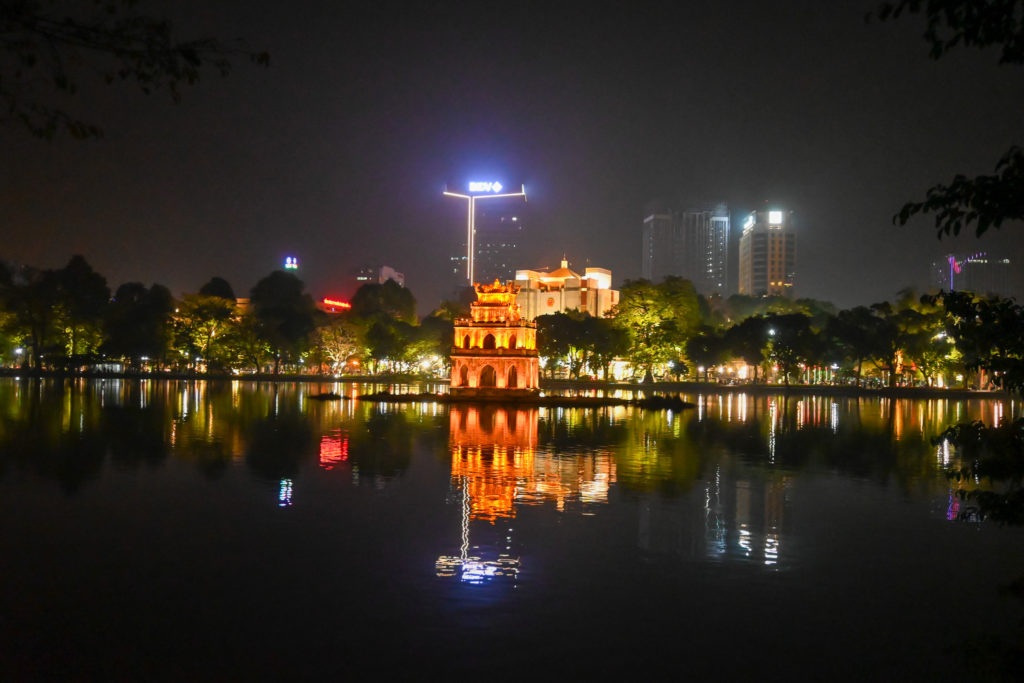
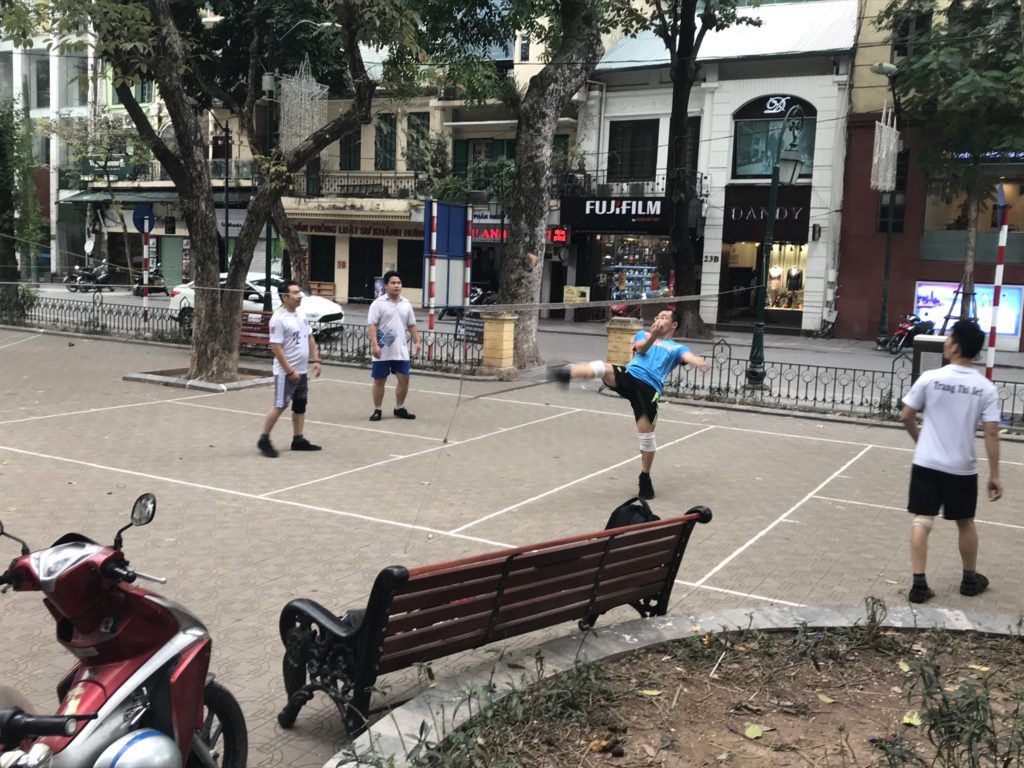
- Thang Long Water Puppet Theatre: Some activities are a real bang-for-your-buck (to use a popular American catch-phrase), and this 100,000 Vietnamese dong (~ 4 USD) puppet show is definitely worth the price of admission. I’ve never seen anything like it. Musicians perform on the side of the stage, while puppets splash around in a pool of water and act out scenes from daily Vietnamese life and folklore. After watching this hilarious puppet show, I realized that I haven’t been to enough puppet performances in my life. The Asians know how to throw on a good puppet performance, and I think we Americans can learn a lesson or two. I’m convinced puppet shows are a great form of entertainment and can serve as a powerful platform for people to share laughter, culture, history, and lessons with one another.
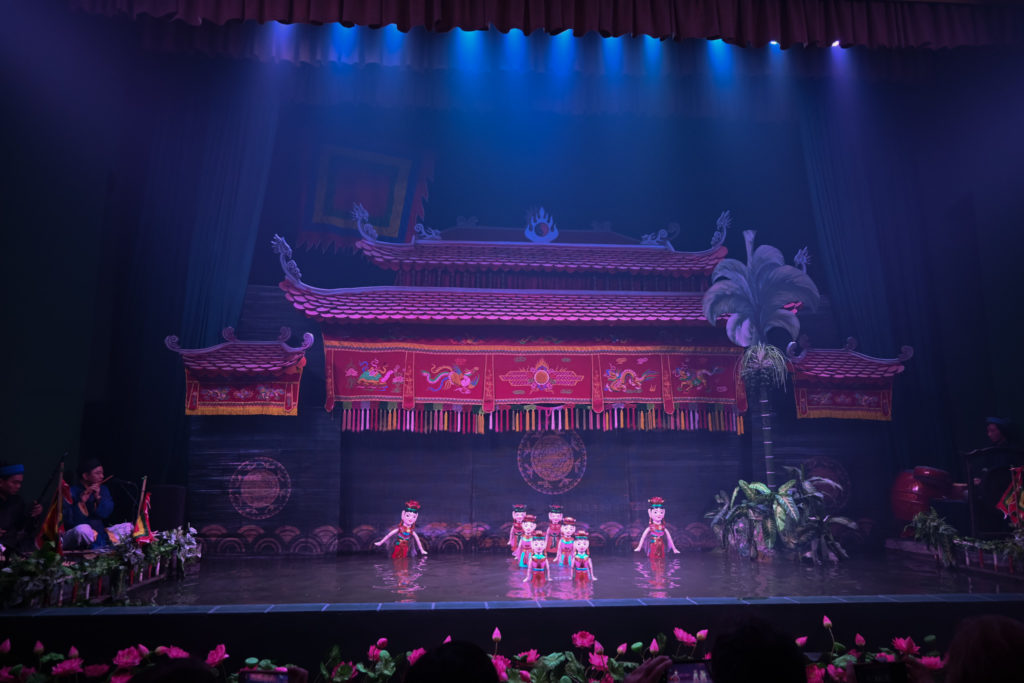
- Hỏa Lò Prison: Don’t visit Hanoi without visiting Hỏa Lò Prison. My prison visit rewarded me with both a history lesson and a valuable lesson on the power of propaganda. Hỏa Lò Prison served two main purposes during its history. Originally, the prison held Vietnamese prisoners whom had revolted against French colonization. Afterwards, during the Vietnamese War (“Resistance War Against America”), the prison held American pilots shot down over Vietnam. Its most famous inmate, John McCain, spent 6 years in the prison. The museum made it appear as though American prisoners were treated like hotel guests during their prison stay. After returning to my hostel, I researched more about the prison and read about a much different story. I learned a valuable lesson on the power of propaganda and its ability to shroud the truth.
- Confucius Temple of Literature: Not a must-see, but definitely a worthwhile stop in Hanoi. A university was built within the temple over 1,000 years ago, with the purpose of educating Vietnam’s bureaucrats, nobles, royalty, and other members of the elite. The school remained open for over 700 years! Insane to think that Confucius, a Chinese philosopher and politician who lived in 500 B.C., has had such a momentous influence around the world for over 1,500 years.

Sapa (also “Sa Pa”)
I am not quite sure why, but I’ve always been obsessed with rice fields. So, after spending a few days in Hanoi, I traveled north to the famous rice terraces of Sapa.
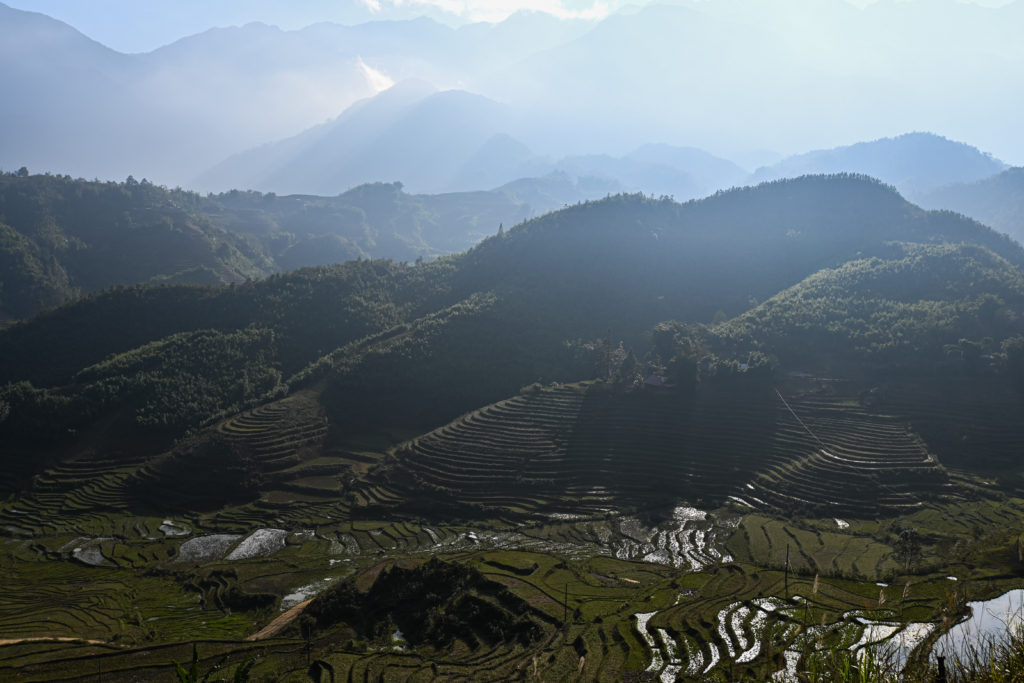
Sapa is a bizarre little city located in northern Vietnam. I had some memorable experiences in Sapa, including a Sapa rice field trek with Brent, an American hostel friend; a failed attempt to go climb Fansipan, the highest mountain in Vietnam (it’s a long story); and a successful motorcycle hitchhiking experience. But, the most memorable experience was a night out at a local hot pot joint.
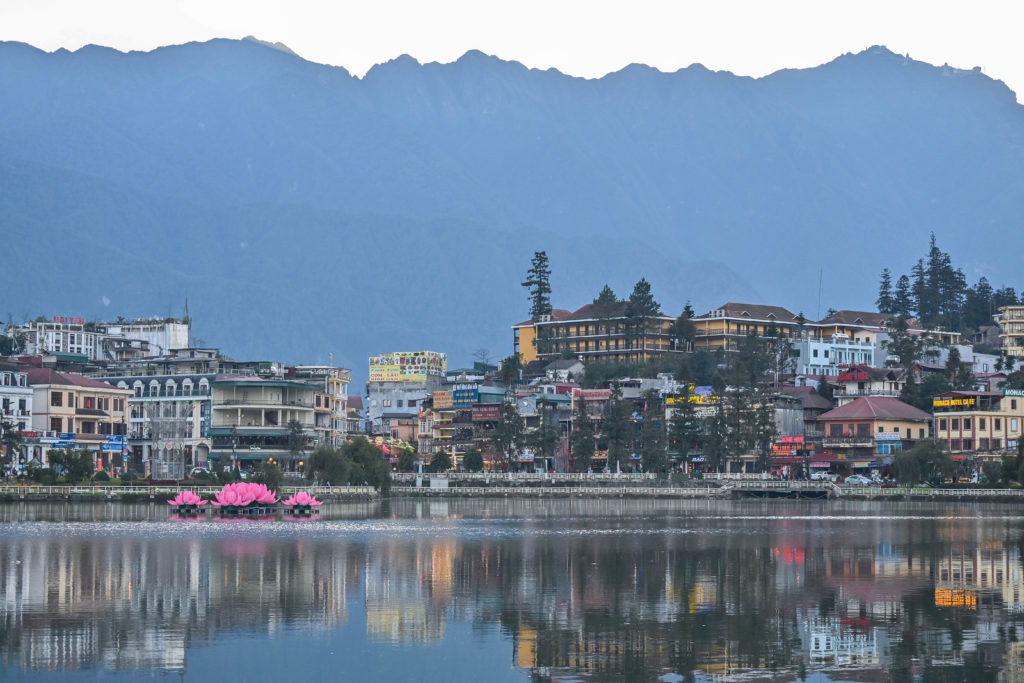
Hot Pot Night in Sapa
Up to this point, I had eaten lots of phở and bánh mì, and I was craving a classic Vietnamese hot pot. For those unfamiliar with the dish, a customer selects some uncooked foods off the menu, and then the customer cooks the food in a giant pot of broth that is heated on a burner at the customer’s table. In my opinion, a hot pot restaurant is really a grocery store with restaurant prices; the customers pay for the food and then cooks their own food. A brilliant business model if you ask me.
After some painful deliberation and a silly argument over hot pot prices with my friend, Brent, I finally convinced Brent that we should visit a local hot pot joint that I had discovered earlier in the day. The entire restaurant was the size of a single car garage and the cost per person was 10 USD per person. One large square table occupied one-third of the restaurant and four two-tops filled the remainder of the space. The large table was occupied by a party of ten rowdy Vietnamese.
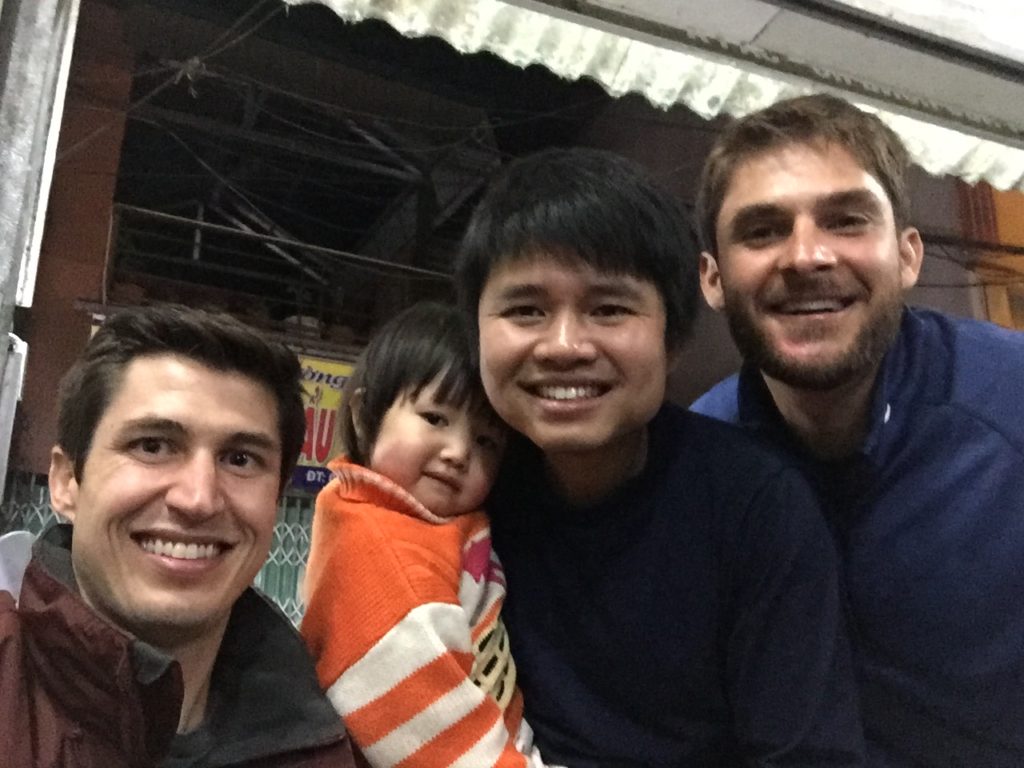
Happy Tết in Sapa
Soon after taking our order, the owner approached and inquired if the Vietnamese guests could visit us to celebrate Tết, the Vietnamese Lunar Near Year, which was to take place in one week. Shortly afterwards, one by one, each of the ten locals came over and offered us a shot of rice wine. Brent and I were planning to wake up at 6am and climb Fansipan mountain, but who were we to say no to such hospitality? Before each shot, we stood up and pretended to sing along to a Vietnamese New Year song.
Although the rice wine, served in recycled plastic water bottles and likely distilled in the back of the restaurant, did not boast a high alcohol content, ten shots in rapid succession seems like a lot, right? Apparently it was not enough. Before five minutes had passed, the locals arrived and began toasting us again, one by one. Déjà vu? Fast-forward 20 minutes and 20 shots later; we were now sitting with our new Vietnamese friends, buying and serving them shots, and leading the table in song. Apparently now, not only did we know all the of the lyrics, but we were so confident in the lyrics it was if we had written the song.
As a traveler visiting a foreign land, far away from home, I live for nights like these. The nights when locals ask me to pull up a chair, and treat me, not as foreigner, but a family member. On those night, I realize I have not traveled away from home but instead, from one home to another home.
